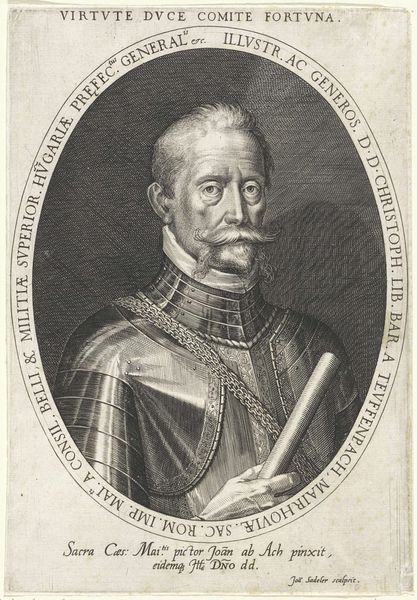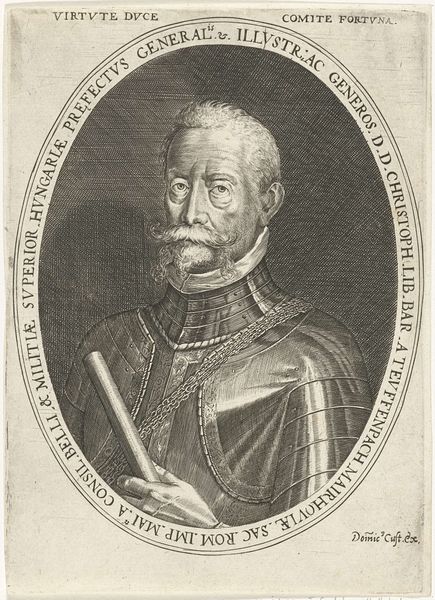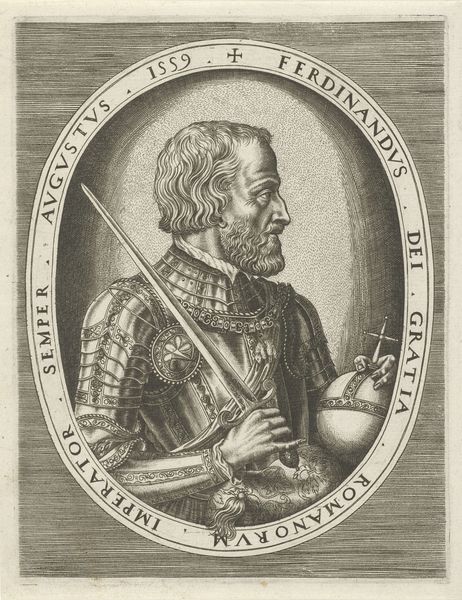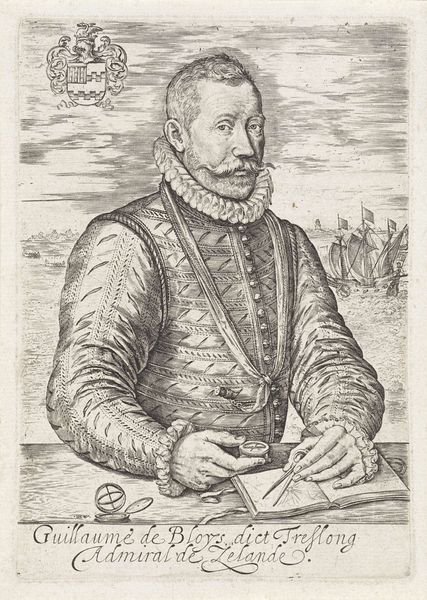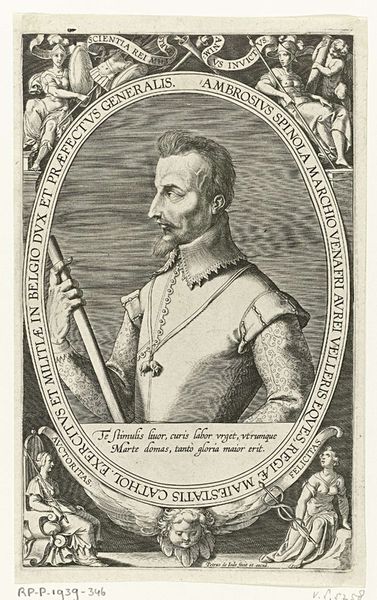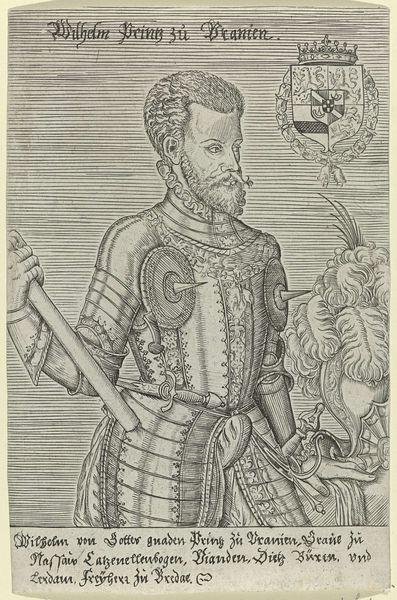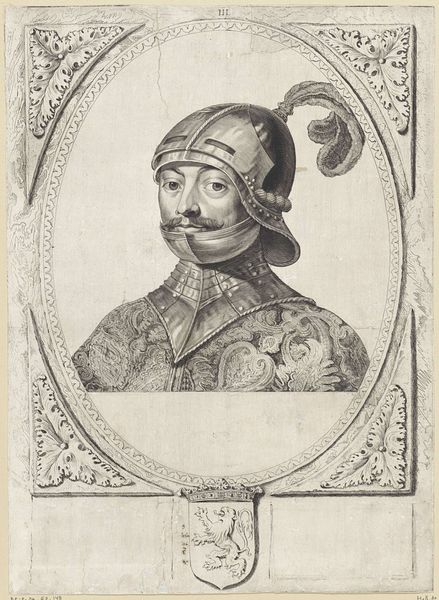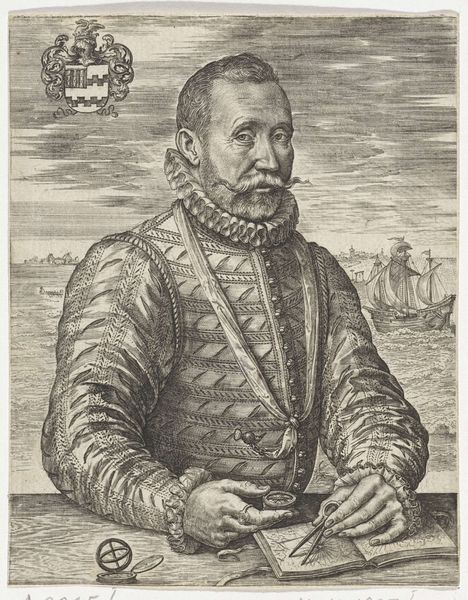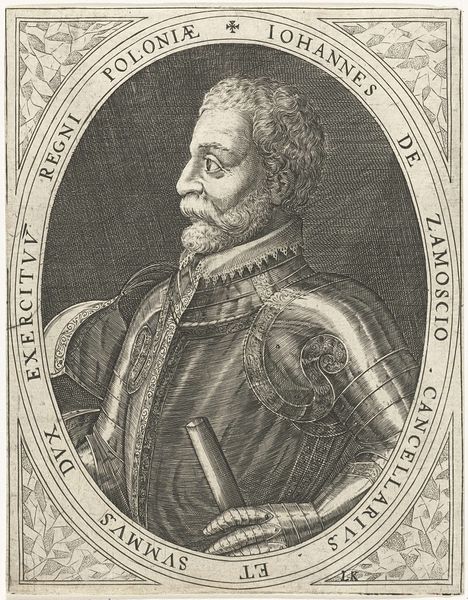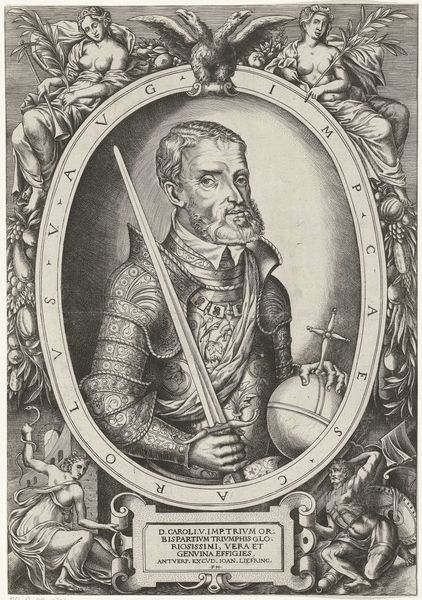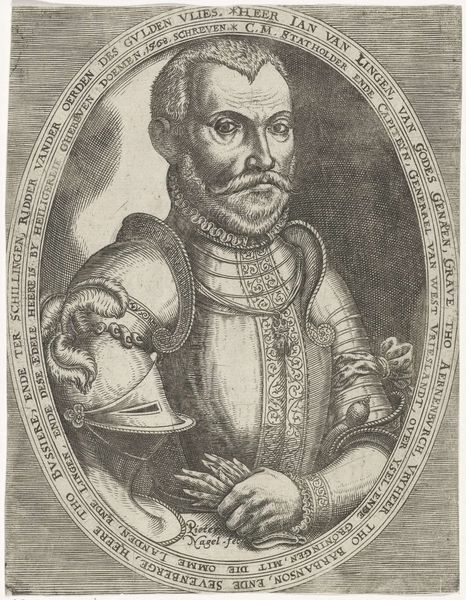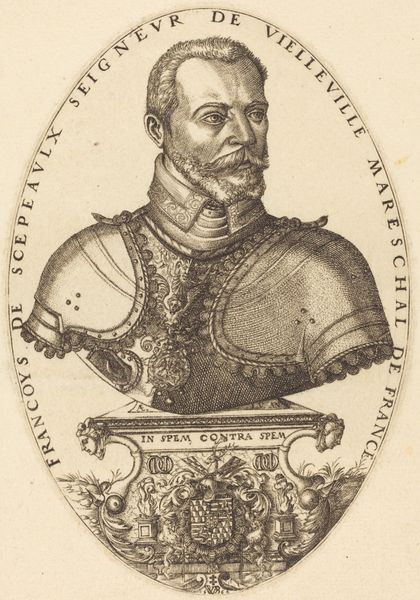
print, engraving
#
portrait
# print
#
old engraving style
#
portrait reference
#
history-painting
#
engraving
Dimensions: height 203 mm, width 135 mm
Copyright: Rijks Museum: Open Domain
Curator: Let’s take a moment to consider this portrait of Christoph von Teuffenbach, dating from around 1560 to 1620. It is believed to be by Giacomo Franco. Editor: It's an intense image, isn’t it? There’s such rigidity, almost a palpable sense of restraint, created by the fine lines of the engraving. He’s practically entombed in that armor. Curator: Yes, but look at the coat of arms positioned above his head. It speaks of lineage, history. It's an instant marker of identity in a society that placed great weight on ancestral background. Editor: And yet, doesn’t it also speak of inherited privilege? The armor isn't just protection; it’s a symbol of power afforded only to a specific class. The print immortalizes not just the man, but the system he upholds. Curator: The visual language here is powerful. Notice how he’s holding his helmet. It signifies readiness, vigilance. This wasn’t merely a portrayal of a man, but of a military leader, Christoph was a war commissar and captain-general. Editor: The helmet almost feels like a trophy, though, doesn't it? And the baton, clutched so firmly, screams of authority. I wonder how this image functioned – as a means of solidifying Teuffenbach’s image, perhaps to broadcast his power throughout the region? The visual cues are carefully constructed for a very specific purpose. Curator: Perhaps. The details are important here, notice the craftsmanship captured by Franco in the etched lines of the armour and on his elaborate mustache and the crisp folds of the garment, suggesting wealth, prestige, but above all a cultivated masculine identity. Editor: Exactly. Looking at it today, it prompts important discussions about the performance of power, the impact of inherited status, and the way these historical constructs still resonate in contemporary power dynamics. Curator: Ultimately, art gives us an anchor into our shared cultural past while still challenging us to ask fundamental questions. Editor: It certainly does. We can now move on to the next exhibit.
Comments
No comments
Be the first to comment and join the conversation on the ultimate creative platform.
